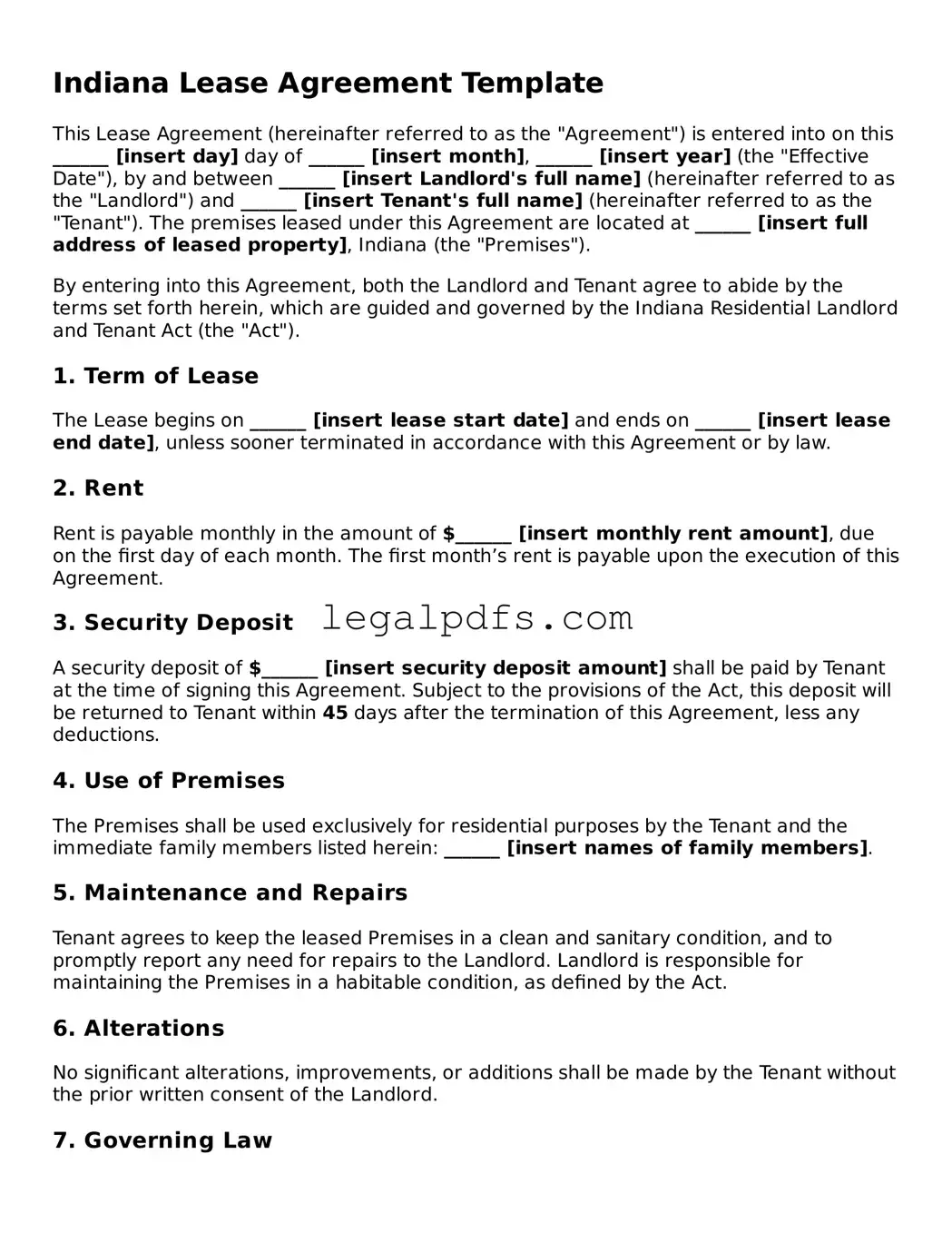Indiana Lease Agreement Template
This Lease Agreement (hereinafter referred to as the "Agreement") is entered into on this ______ [insert day] day of ______ [insert month], ______ [insert year] (the "Effective Date"), by and between ______ [insert Landlord's full name] (hereinafter referred to as the "Landlord") and ______ [insert Tenant's full name] (hereinafter referred to as the "Tenant"). The premises leased under this Agreement are located at ______ [insert full address of leased property], Indiana (the "Premises").
By entering into this Agreement, both the Landlord and Tenant agree to abide by the terms set forth herein, which are guided and governed by the Indiana Residential Landlord and Tenant Act (the "Act").
1. Term of Lease
The Lease begins on ______ [insert lease start date] and ends on ______ [insert lease end date], unless sooner terminated in accordance with this Agreement or by law.
2. Rent
Rent is payable monthly in the amount of $______ [insert monthly rent amount], due on the first day of each month. The first month’s rent is payable upon the execution of this Agreement.
3. Security Deposit
A security deposit of $______ [insert security deposit amount] shall be paid by Tenant at the time of signing this Agreement. Subject to the provisions of the Act, this deposit will be returned to Tenant within 45 days after the termination of this Agreement, less any deductions.
4. Use of Premises
The Premises shall be used exclusively for residential purposes by the Tenant and the immediate family members listed herein: ______ [insert names of family members].
5. Maintenance and Repairs
Tenant agrees to keep the leased Premises in a clean and sanitary condition, and to promptly report any need for repairs to the Landlord. Landlord is responsible for maintaining the Premises in a habitable condition, as defined by the Act.
6. Alterations
No significant alterations, improvements, or additions shall be made by the Tenant without the prior written consent of the Landlord.
7. Governing Law
This Agreement is governed by, and construed in accordance with, the laws of the state of Indiana.
8. Entire Agreement
This document and any attachments constitute the entire agreement between the parties concerning the subject matter hereof and supersedes all prior agreements, understandings, negotiations and discussions, whether oral or written, between the parties.
9. Signatures
This Agreement shall be signed by ______ [insert Landlord's name], the Landlord, and ______ [insert Tenant's name], the Tenant, as an acknowledgement of acceptance of the terms set forth.
